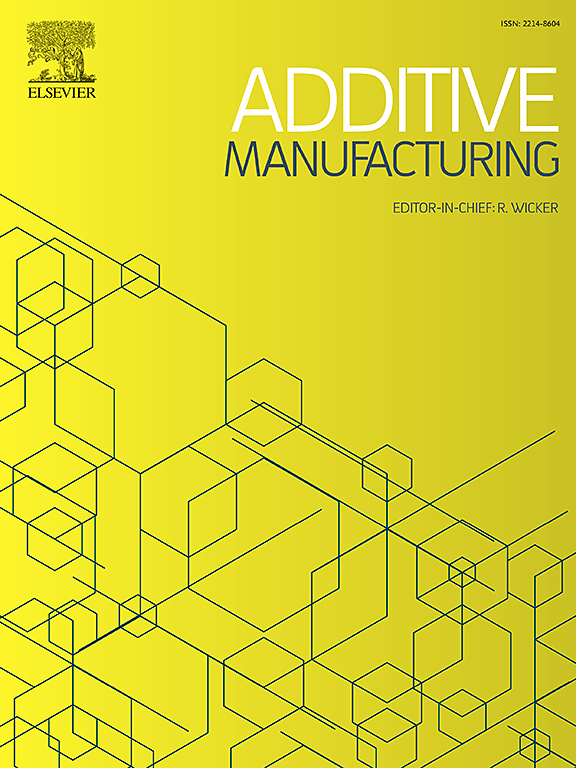Formation mechanisms of Sn-rich δ phase and its role in strengthening Cu-10Sn manufactured by laser powder bed fusion
IF 10.3
1区 工程技术
Q1 ENGINEERING, MANUFACTURING
引用次数: 0
Abstract
Cu-Sn alloys produced via laser powder bed fusion (L-PBF) additive manufacturing (AM) have gained significant attention because they combine the advantages of AM relevant to intricate component design with outstanding combinations of strength, ductility, and resistance to wear and corrosion. However, a detailed understanding of the microstructure that contributes to the enhancement of the mechanical properties of L-PBF Cu-10Sn alloys remains unclear. In particular, there is a lack of understanding of the formation mechanisms of the Sn-rich δ phase commonly observed in Cu-10Sn. This study reveals two distinct variants of the δ phase possessing unique morphological characteristics. These characteristics are attributed to the local solidification conditions inherent to the melt pool boundaries versus those at the interiors of melt pools. A phase transformation pathway that elucidates the origin of the morphological variants of the δ phase from the Sn-rich metastable phases during the cyclic heating of the AM process is proposed. We report superior mechanical properties in L-PBF Cu-10Sn compared to those of conventionally manufactured counterparts due to the synergistic contributions from grain boundaries, dislocations, and the δ phase. Notably, the δ phase alone contributes approximately 22 % to the overall strength observed in the L-PBF Cu-10Sn alloy. The discovery of two types of distinct Sn-rich δ phase offers key insights into precise microstructural control in AM Cu-Sn alloys to enhance mechanical properties, providing practical strategies for improving material performance for diverse applications in automotive, aerospace, and machinery industries.
求助全文
约1分钟内获得全文
求助全文
来源期刊

Additive manufacturing
Materials Science-General Materials Science
CiteScore
19.80
自引率
12.70%
发文量
648
审稿时长
35 days
期刊介绍:
Additive Manufacturing stands as a peer-reviewed journal dedicated to delivering high-quality research papers and reviews in the field of additive manufacturing, serving both academia and industry leaders. The journal's objective is to recognize the innovative essence of additive manufacturing and its diverse applications, providing a comprehensive overview of current developments and future prospects.
The transformative potential of additive manufacturing technologies in product design and manufacturing is poised to disrupt traditional approaches. In response to this paradigm shift, a distinctive and comprehensive publication outlet was essential. Additive Manufacturing fulfills this need, offering a platform for engineers, materials scientists, and practitioners across academia and various industries to document and share innovations in these evolving technologies.
 求助内容:
求助内容: 应助结果提醒方式:
应助结果提醒方式:


